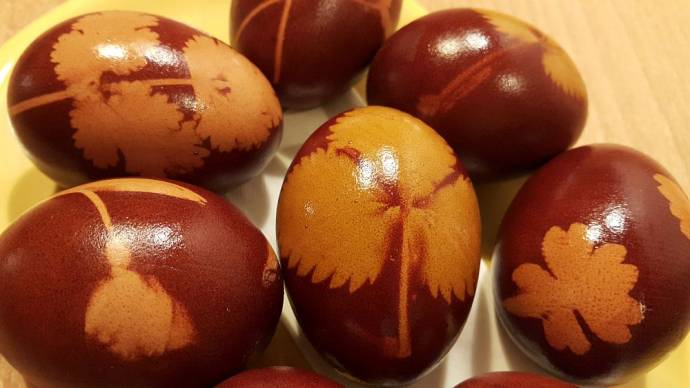March 30, 2018
To cut a long story short, the history of popular Easter eggs colour agents in Slovenia went from traditional/natural to industrial and shortly after back to natural/traditional again.
It must have been somewhere in the eighties, when my parents were the only ones in the neighbourhood to colour (if at all) Easter eggs in what I believed was compost (it was in fact onion skins), while the world around me was undergoing an amazing process of industrial bright colouring transformation. It was difficult to understand at the time, why someone might prefer a brownish egg with the imprint of parsley over a neon blue look with an Easter bunny sticker in the centre.
Five or ten years later people figured those wonderful paints of blue and pink weren’t edible, which brought us all back to tradition, although not without some additional “organic” inventions such as “use blueberries to paint your eggs blue” and “cyclamen flowers to make them purplish”. Luckily, these smart tricks never really spread from social networks into reality, as wasting a bowl of blueberries or a bucket of cyclamen flowers to make a box of eggs look fancy could hardly be understood as environmentally or economically savvy.
In any case, with minimum additional waste and maximum health and efficiency, we landed at the Slovenian classic. Easter eggs, marked with a seasonal sprig or flower, and slowly cooked in red onion skins.
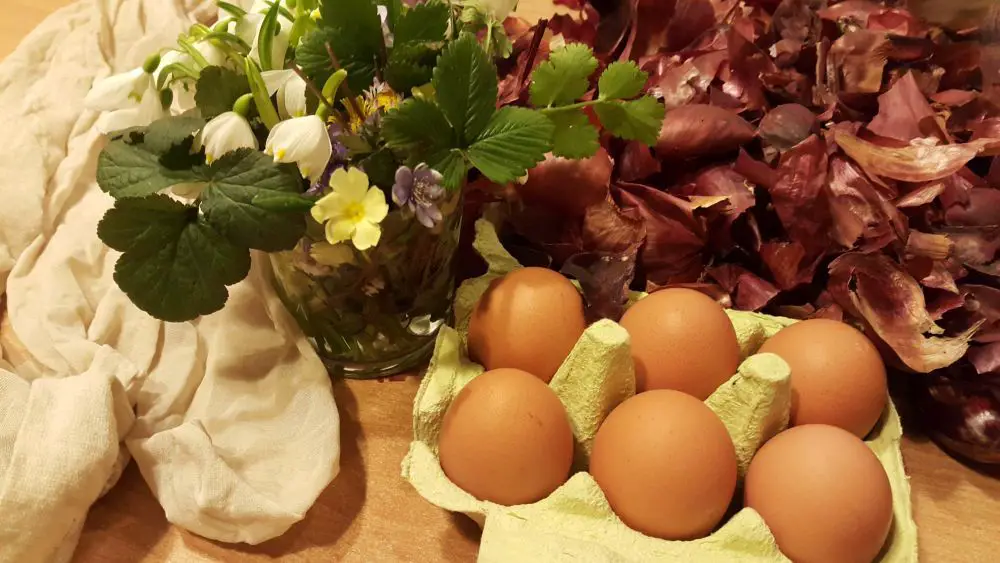
Equipment:
Eggs
1 pot of red onion skins
some sprigs and flowers for decoration
1 pair of pantyhose/tights
some thread or, if you dare, rubber bands (ours fell apart while cooking)
scissors
If you forgot to save onion skins throughout the year you can buy them in some supermarkets – our local Mercator was checked today and they had them.
Place the skins into a pot of cold water and let them soak a bit while you wrap the eggs in the nylon pantyhose, so that the sprig or flower you have chosen to decorate the shell will stay in place during the colouration process.
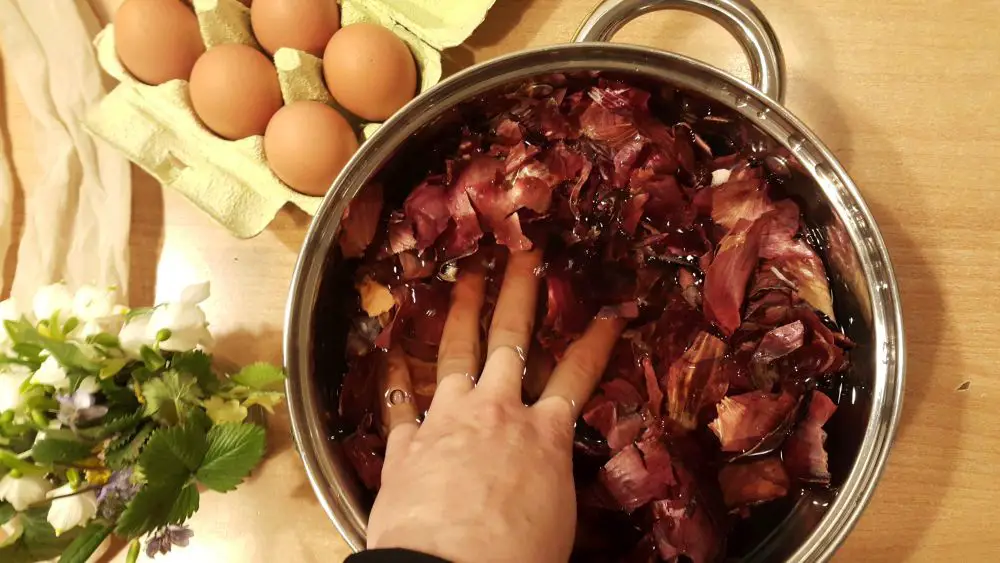
Tighten the nylon on the opposite end of the egg with a string, or we used elastic bands but they all eventually broke while the water was boiling. Although the nylon and sprig somehow stayed in place and the eggs turned out nice, the use of rubber bands cannot be recommended as the healthy option here.
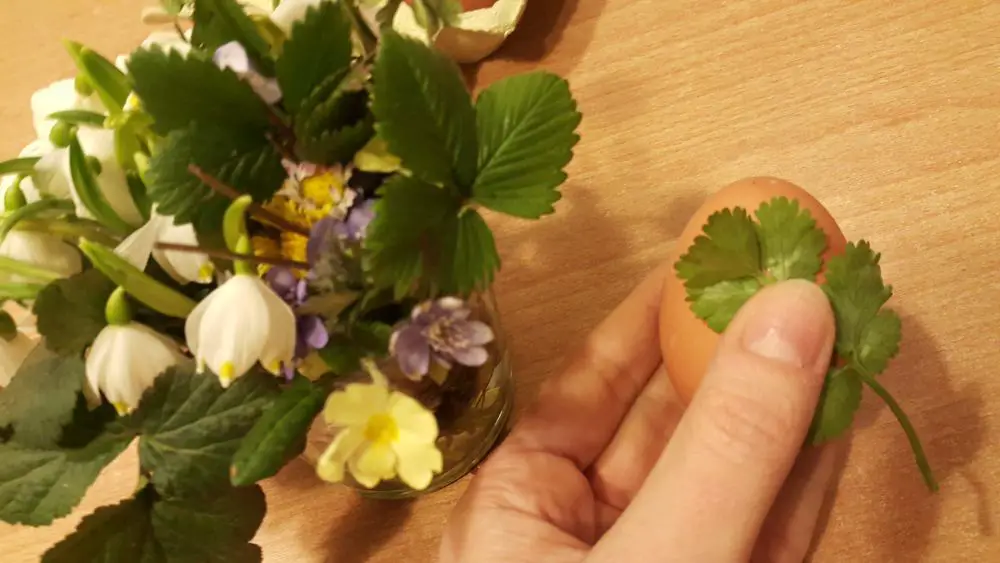
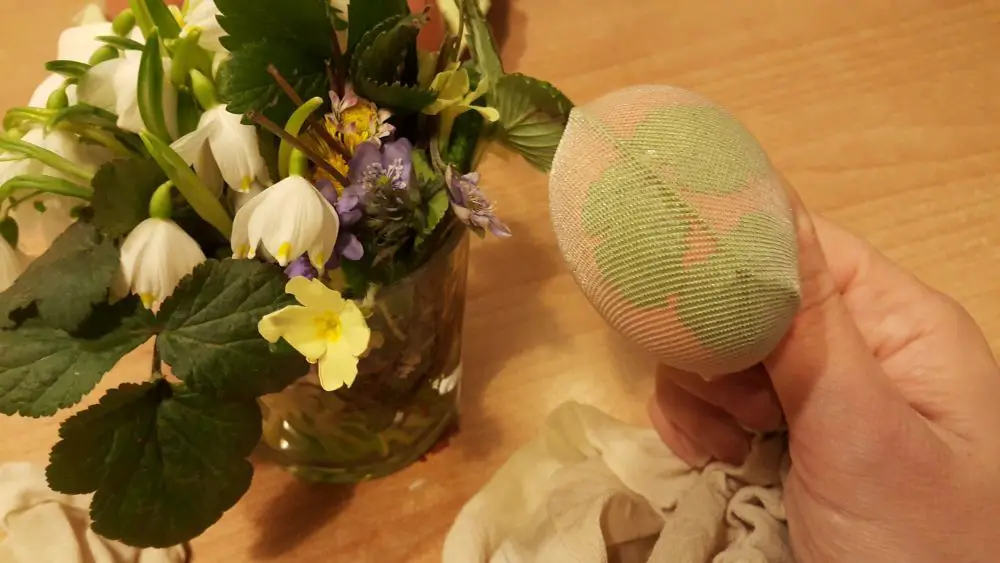
When the eggs are wrapped in nylon, we place them in the pot with onion skins, and make sure they are fully submerged in the water and skins. Heat this to the boiling point then turn the heat down and cook slowly for about ten minutes. Take the pot off the heat and leave the eggs inside to cool down a little. By the time they are cooled down enough to get them out by hand they are done. They should be nice and burgundy by now, so we unwrap and wipe them before any stains develop.
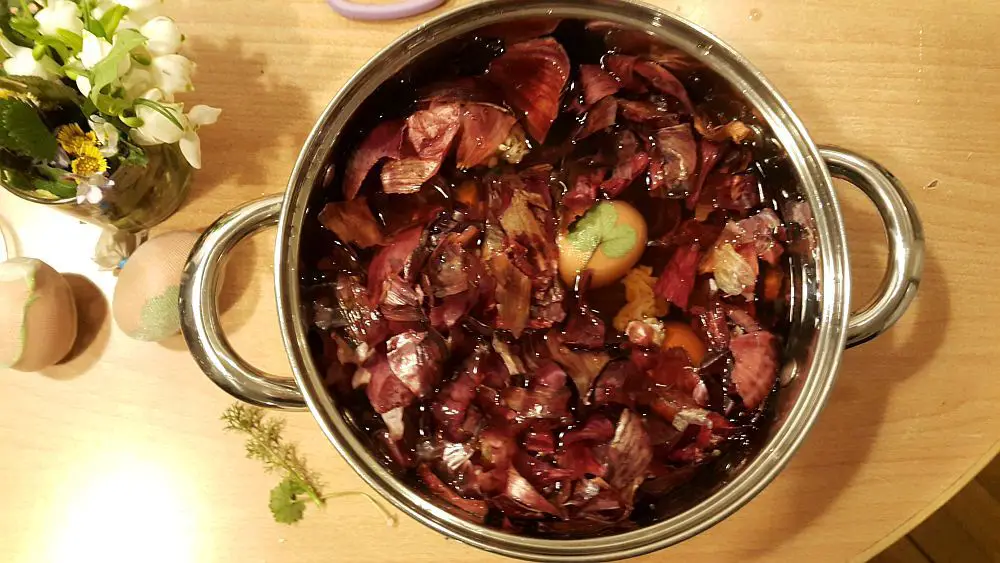
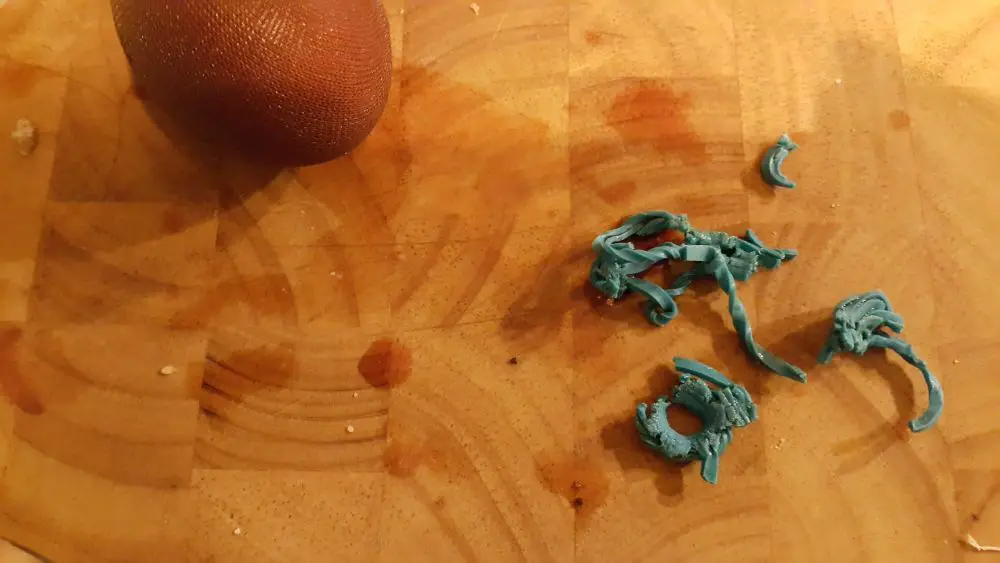
Broken rubber bands after the eggs were taken out of the cooking pot
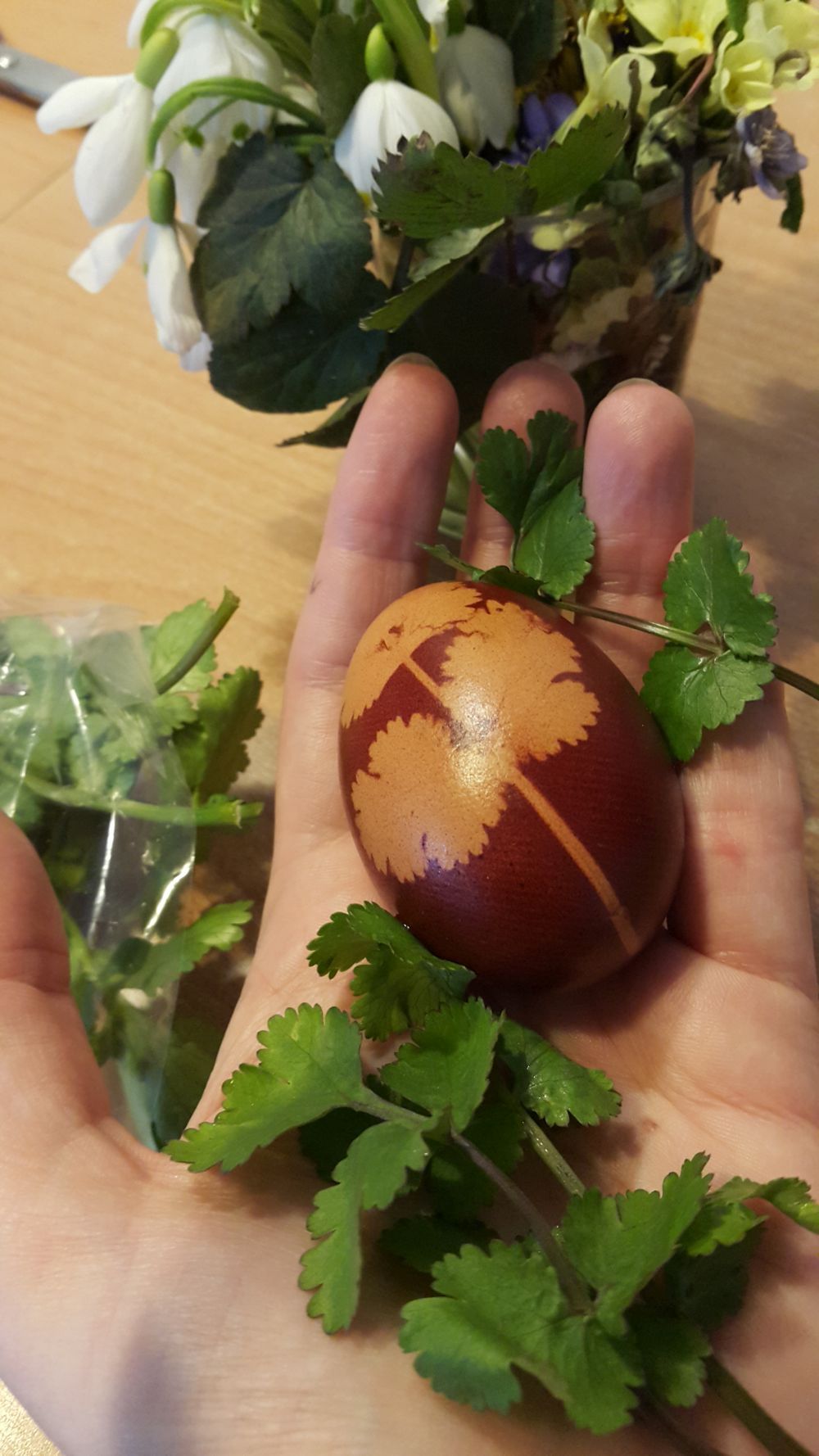
Coriander (cilantro) pattern
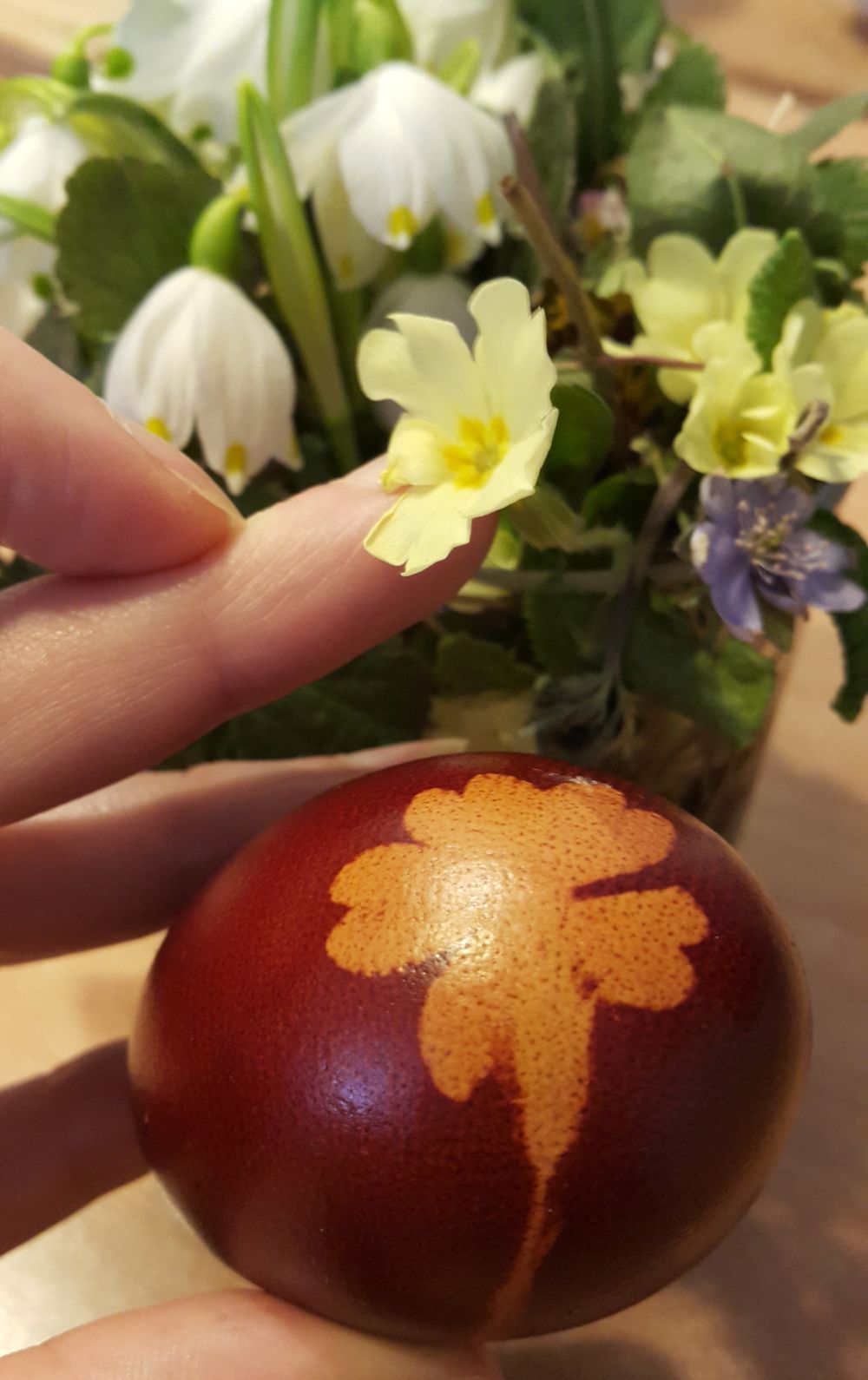
Primrose pattern
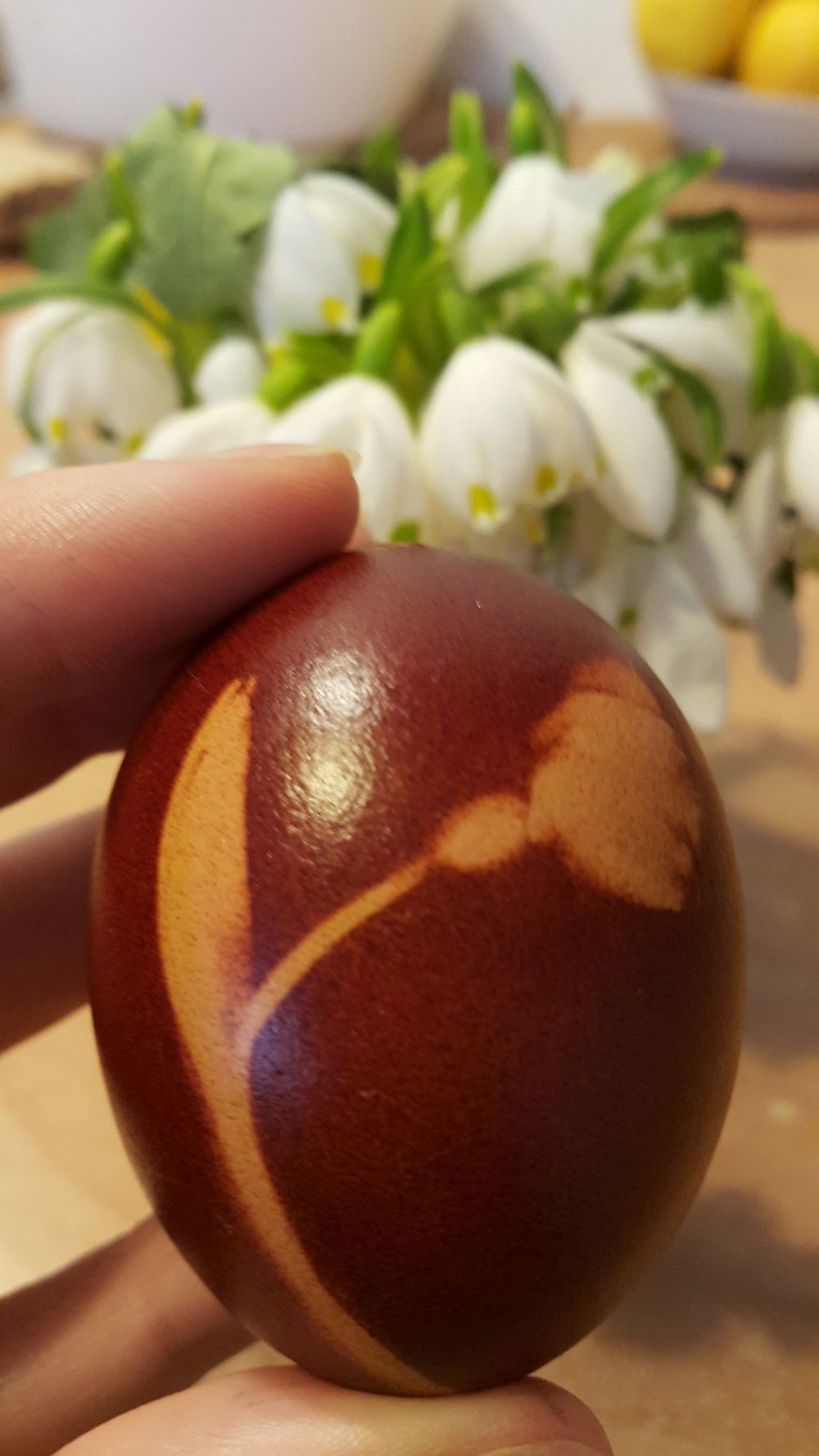
Snowdrop
If you’d like them to be nice and shiny, you can put a drop of oil on a handkerchief or tissue and rub it over your eggs, like we did with the one in the picture below.
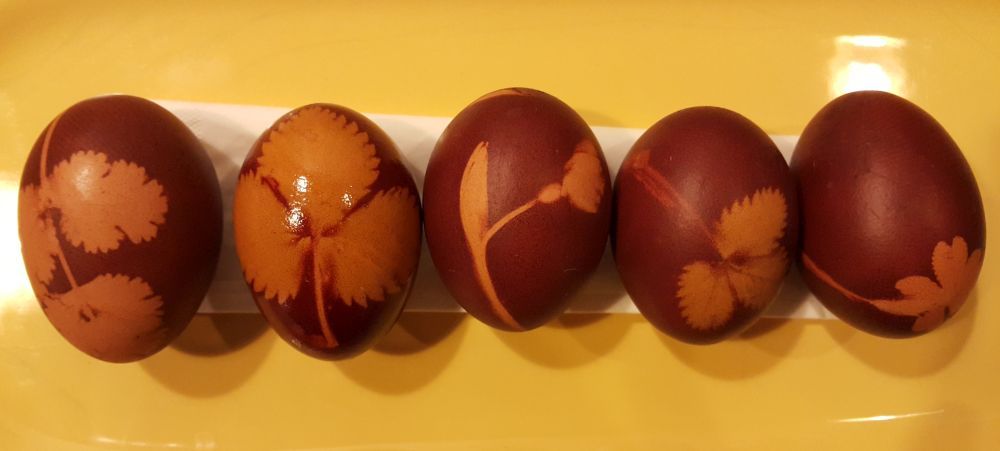
And if you are wondering what to do with these eggs after they have all been found by the kids but not yet eaten, we suggest you put them in dandelion salad.
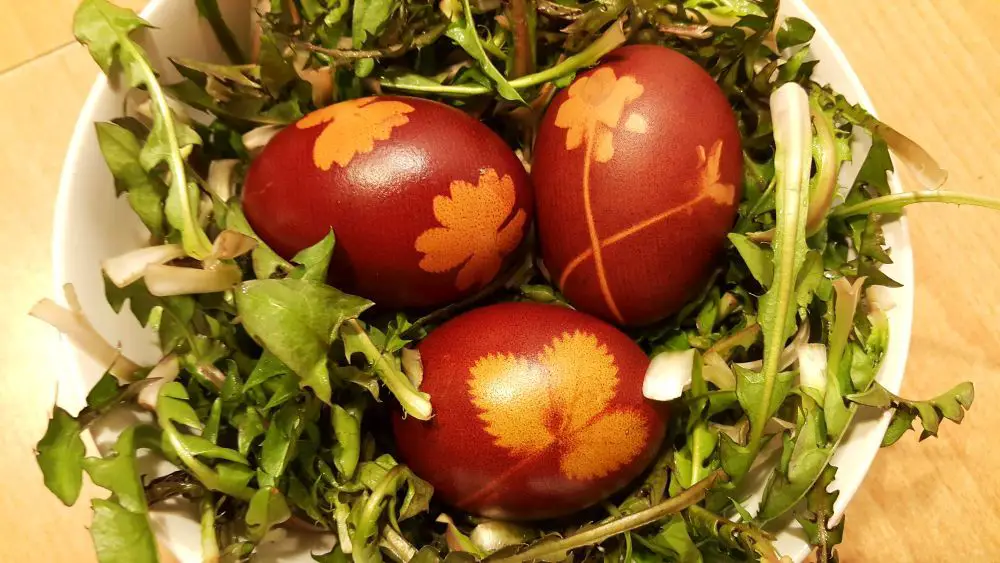
Peel them first
Dober tek!

